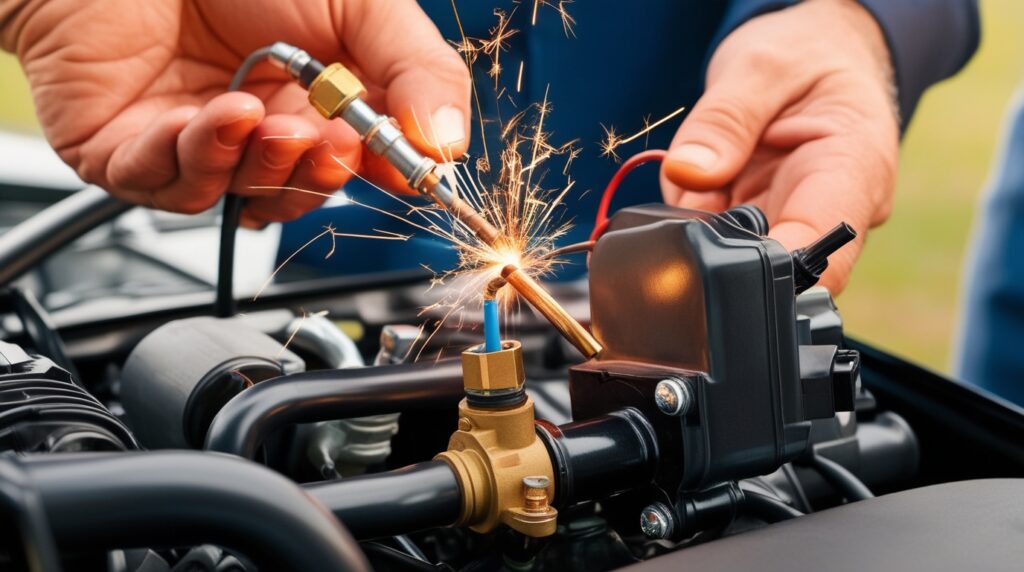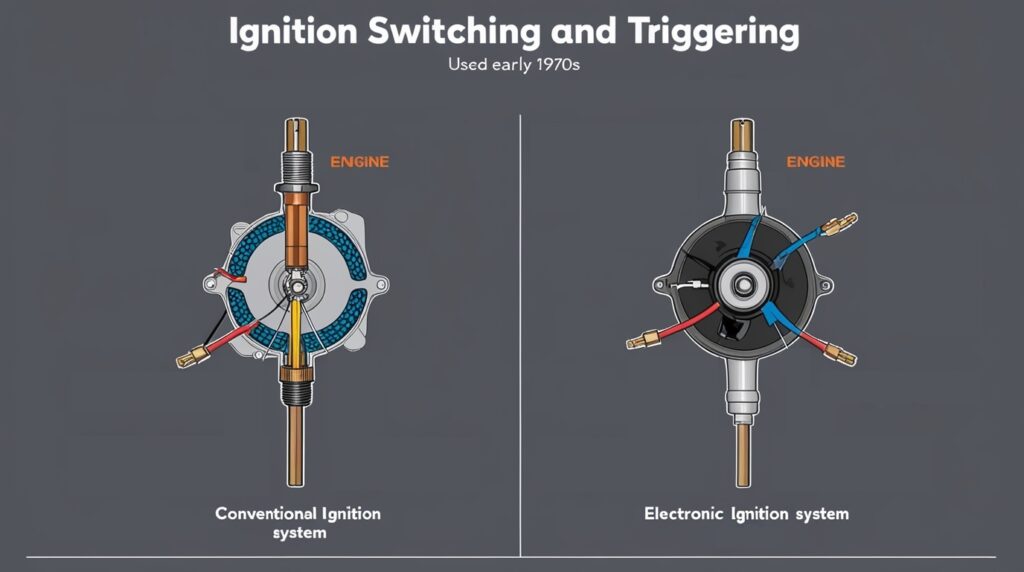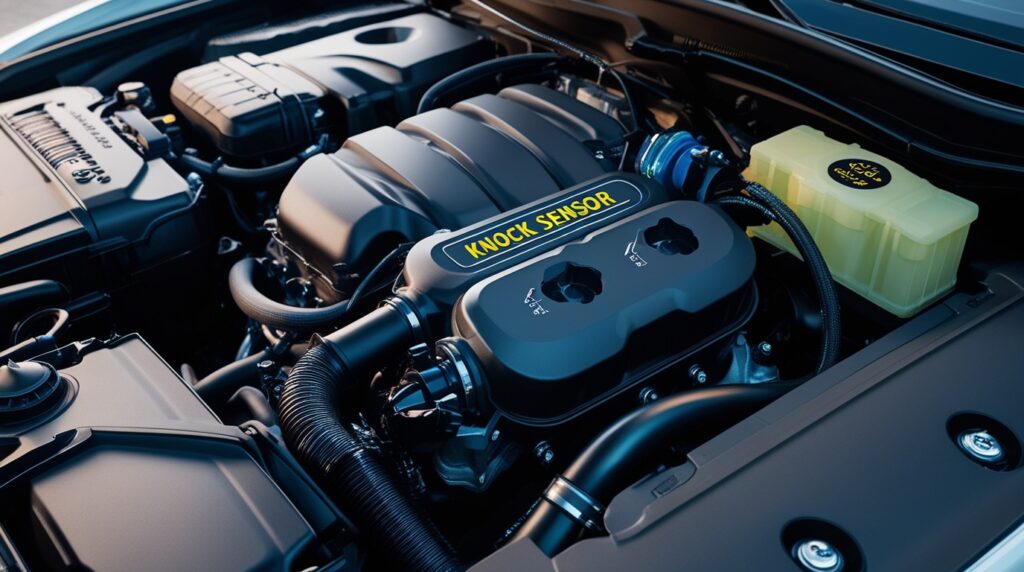The properties of lubricants
An essential properties of lubricants principal function is to prevent friction by forming a boundary layer between two surfaces. Heat should be dissipated from surfaces. Carries impurities to the filters, Defends against oxidation and corrosion, and gears transmissions.
Oil Lubricants:
Lubricants are chemicals that are used to reduce the force of friction between moving parts of a machine in contact.
Lubricant oil composition:
Lubricant oil fractions are a complex combination of straight and branched-chain paraffinic, naphthenic aromatic hydrocarbons with boiling temperatures ranging from 302 to 593 degrees Celsius. Some specialty lubricant oils have boiling points ranging from 177 to 815 degrees Celsius. The anticipated use determines the grade of lubricating oil base to utilize.
Classification of Lubricants
- Liquid Lubricants (Ex.: Mineral Oil, Petroleum Oil, Vegetable Oil, etc.)
- Semi-Solid Lubricants (Ex.: Petroleum Jellies)
- Solid Lubricants (Ex.: Graphite, Molybdenum, Disulphide, etc)
What is the Viscosity Index?
The Viscosity Index (VI) is a measure of a lubricant’s change in viscosity in response to changes in temperature. It is a dimensionless value that ranges from 0 to 100, with higher values indicating a smaller change in viscosity with temperature. A lubricant with a high VI will maintain its viscosity and lubricating properties over a wide temperature range, while a lubricant with a low VI will experience a significant change in viscosity with temperature.
High Viscosity vs Low Viscosity: What to Choose?
The choice between high viscosity and low viscosity lubricants depends on the specific application and operating conditions.
High Viscosity Lubricants:
High viscosity lubricants are typically used in applications where:
- High pressure and load-carrying capacity are required
- Slow-moving or high-torque applications are present
- High temperatures are encountered
- Thick, heavy-duty lubrication is needed
Advantages of high viscosity lubricants:
- Provide excellent lubrication and wear protection
- Maintain film strength and lubricity at high temperatures
- Suitable for heavy-duty and high-pressure applications
Disadvantages of high viscosity lubricants:
- May be too thick for low-temperature or high-speed applications
- Can increase energy consumption and reduce efficiency
- May not be suitable for applications requiring low friction and high speed
Low Viscosity Lubricants:
Low viscosity lubricants are typically used in applications where:
- High speed and low friction are required
- Low temperatures are encountered
- Fuel efficiency and low energy consumption are important
- Thin, light-duty lubrication is needed
Advantages of low viscosity lubricants:
- Provide low friction and high speed capabilities
- Suitable for low-temperature and high-speed applications
- Can improve fuel efficiency and reduce energy consumption
Disadvantages of low viscosity lubricants:
- May not provide sufficient lubrication and wear protection
- Can break down quickly at high temperatures
- May not be suitable for heavy-duty and high-pressure applications
In general, the choice between high viscosity and low viscosity lubricants depends on the specific requirements of the application. A lubricant with a high VI can provide a good balance between high and low viscosity properties, making it suitable for a wide range of applications.
What Role Does Temperature Play in Lubricant Properties?
Viscosity, a lubricant’s thickness and flowability, is directly affected by temperature. As temperature increases, viscosity typically decreases, making the lubricant thinner and more prone to breakdown. Conversely, as temperature decreases, viscosity increases, making the lubricant thicker and more resistant to flow.
Effects of High Temperature
High temperatures can cause lubricants to:
- Break down and degrade, leading to a loss of lubricity and increased wear
- Oxidize, forming sludge and varnish that can clog systems and reduce performance
- Evaporate, reducing the lubricant’s volume and effectiveness
- Lose their additives, which can compromise their performance and protection capabilities
Effects of Low Temperature
Low temperatures can cause lubricants to:
- Thicken, making them more difficult to pump and circulate
- Lose their lubricity, leading to increased wear and friction
- Become more prone to gelation, which can cause system failure
- Experience reduced flowability, making them less effective in cold-start conditions
Optimal Temperature Range
Each lubricant has an optimal temperature range within which it performs best. Operating outside of this range can compromise the lubricant’s performance, leading to reduced effectiveness, increased wear, and potentially even system failure.
Lubricant Additives:
The usage of additives has nearly totally contributed to improvements in lubricating oil. The following are the three primary reasons for adding additives:
1.To keep the lubricant in service as long as possible by preventing chemical change and degradation.
2. To shield the mechanism from dangerous combustion products and lubricating oil that isn’t working properly.
3. To enhance the oil’s current physical qualities while also introducing additional beneficial features.
Lubricant additives that are commonly used are:
- Barium
- Calcium
- Phosphorous
- Sulfur
- Chlorine
- Zinc
- Oxidation inhibitor
Flash Point and Fire Point
Importance of Pour Point in Lubrication
The pour point of a lubricant is a property of lubricants is the lowest temperature at which it will continue to flow. The oil thickens and ceases to flow freely below the pour point. The quantity of wax particles removed during crude processing affects the pour point. The greater the pour point, the more wax particles there are. The lower the pour point, the fewer wax particles there are.
![Properties of Lubricants | Purposes of Lubrication | Oil Lubricants [2024] 1 Pour Point of Lubricant](https://blogmech.com/wp-content/uploads/2024/09/01-pour-point-of-lubricant.png)
What is the Flash Point of a Lubricant?
The flash point properties of lubricants are the lowest temperature at which a combination of oil, vapor, and air becomes flammable. It is measured by gradually heating an oil-vapor-air combination until it ignites in a typical laboratory container. Lubricating oils have a flash point of 204 °C (400 °F) or above.
Fire Point
Fire point refers to the temperature at which a lubricant ignites and sustains a flame. A lubricant with a high fire point is less likely to ignite and cause a fire.
Cloud Point
Cloud point refers to the temperature at which a lubricant begins to thicken and form a cloudy appearance. A lubricant with a low cloud point will remain fluid and effective at low temperatures.
Freezing Point
Freezing point refers to the temperature at which a lubricant solidifies and becomes ineffective. A lubricant with a low freezing point will remain fluid and effective at low temperatures.
Lubricants have several physical properties that serve their function and performance
The viscosity of oil lubricants:
Viscosity, a property of lubricants, is the resistance offered by it to the deforming stress, i.e., it is the resistance offered to the flow of the lubricant. The viscosity of the oil decreases with the increase in temperature. The viscosity of the lubricating oil should not go down below a certain specified value at the highest operating temperature of the bearings. If too much thick oil is used, it will lead to power loss, higher operating temperature, and excessive wear and tear of the parts. If the oil is too thin, it cannot lubricate properly and lead to rapid wear of moving parts.
![Properties of Lubricants | Purposes of Lubrication | Oil Lubricants [2024] 2 viscosity of lubricant oil-properties of lubricants](https://blogmech.com/wp-content/uploads/2024/09/01-properties-of-lubricant-viscosity.jpg)
The viscosity of four different oils is shown in the figure below. In thinner, low-viscosity oils, the ball sinks quicker, whereas, in high-viscosity oils, it sinks less.
![Properties of Lubricants | Purposes of Lubrication | Oil Lubricants [2024] 3 Checking viscosity of lubricating oil](https://blogmech.com/wp-content/uploads/2024/09/01-viscosity-of-lubricant-the-properties-of-lubricant.jpg)
Oiliness:
It is the properties of lubricants that allow them to spread and attach themselves firmly to the bearing surfaces. The oiliness of the lubricating oil should be high for better lubrication.
![Properties of Lubricants | Purposes of Lubrication | Oil Lubricants [2024] 4 oiliness - functions of lubricant](https://blogmech.com/wp-content/uploads/2024/09/01-properties-of-lubricant-oiliness.jpg)
Flash and fire point
A property of lubricants of an oil is the minimum temperature at which it gives off enough vapor so that a momentary flame is obtained when a naked flame is brought near the oil surface. A fire point is a minimum temperature at which oil continuously burns. The fire point is always greater than the flash point. The flash point of the lubricating oil should be higher than the operating temperature of the bearing.
Volatility:
When the lubricating oil is exposed to a high temperature for a long time, it may evaporate. This property is known as volatility. The loss of lubricating oil is known as loss of evaporation. The lubricating oil should have low volatility at the operating temperature. If it has high volatility, oil consumption will be higher.
Detergency:
The lubricating oil should carry away small particles to keep the interior of the engine clean. This property of lubricating oil is known as detergency.
![Properties of Lubricants | Purposes of Lubrication | Oil Lubricants [2024] 5 detergency](https://blogmech.com/wp-content/uploads/2024/09/01-properties-of-lubricant-detergency.jpg)
Demulsibility (water separation):
The lubricating oil should not form an emulsion when brought in contact with water. The property of resisting emulsification is known as demulsibility. The emulsion leads to a collection of dust, dirt, etc., and will increase friction, wear, and oxidation. Hence, it should be avoided.
![Properties of Lubricants | Purposes of Lubrication | Oil Lubricants [2024] 6 demulsibility](https://blogmech.com/wp-content/uploads/2024/09/01-properties-of-lubricant-demulsibility.jpg)
Foaming:
It is the condition in which minute air bubbles are held in the oil. This will reduce the mass flow of oil and also increase oxidation. Hence, the lubricating oil should be free from foaming trouble.
![Properties of Lubricants | Purposes of Lubrication | Oil Lubricants [2024] 7 foaming](https://blogmech.com/wp-content/uploads/2024/09/01-properties-of-lubricant-foaming.jpg)
Corrosiveness:
The properties of the lubricant should not attack the engine materials chemically. The oil should prevent corrosion, and it should not contain sulfur.
![Properties of Lubricants | Purposes of Lubrication | Oil Lubricants [2024] 8 corrosiveness](https://blogmech.com/wp-content/uploads/2024/09/01-properties-of-lubricant-corrosiveness.jpg)
In addition, lubricating oil should have a high film strength to withstand loads. It should be non-toxic and cheaply available.
Oxidation Resistance
Oxidation resistance refers to a lubricant’s ability to resist chemical reactions with oxygen, which can lead to the formation of sludge, varnish, and other deposits. A lubricant with good oxidation resistance will maintain its viscosity and performance over time, even in the presence of heat, oxygen, and contaminants.
Film Strength
Film strength refers to a lubricant’s ability to maintain a thin, continuous film between moving parts, even under high pressure and temperature. A lubricant with good film strength will provide effective lubrication and prevent metal-to-metal contact, reducing wear and friction.
Rust and Corrosion Inhibiting
Rust and corrosion inhibiting properties refer to a lubricant’s ability to prevent the formation of rust and corrosion on metal surfaces. A lubricant with good rust and corrosion inhibiting properties will contain additives that react with metal surfaces to form a protective layer, preventing corrosion and rust.
Water Separation
Water separation refers to a lubricant’s ability to separate from water, which can contaminate the lubricant and reduce its effectiveness. A lubricant with good water separation properties will quickly separate from water, preventing emulsification and maintaining its lubricating properties.
Oxidation Stability
Oxidation stability refers to a lubricant’s ability to resist degradation due to oxidation. A lubricant with good oxidation stability will maintain its viscosity and performance over time, even in the presence of heat, oxygen, and contaminants.
Purposes of lubrication (or) Functions of a lubricant
- 1. It reduces friction between moving parts.
- 2. It reduces the wear and tear of the moving parts.
- 3. It minimizes power loss due to friction.
- 4. It provides a cooling effect—During circulation, it carries heat from the hot moving parts and delivers it to the surroundings through the crankcase.
- 5. It provides a cushioning effect – It serves as a cushion against the shocks of the engine.
- 6. It provides cleaning action – Impurities such as carbon particles are dissolved during its circulation.
- 7. It provides a sealing action – It helps the piston rings to provide an effective seal against high-pressure gases in the cylinder from leaking out.
- 8. It reduces noise.
The barrier of corrosion:
Corrosion inhibitors protect alloy bearings and metal surfaces from chemical assault.
Improvers for anti-wear:
With this film boundary lubrication, an anti-wear improver, the properties of lubricants protect rubbing surfaces. Zinc Di thiophosphate is one such anti-wear (and oxidation inhibitor) compound (ZDDP).
Detergent:
Detergents the properties of lubricants have a tendency to neutralize deposits before they develop under high temperature and pressure circumstances, or as a result of utilizing a sulfur-rich fuel.
Dispersant:
A dispersant is a property of a lubricant, a substance that is used to scatter or suspend pollutant deposits. Polyesters and benzylamine, for example, are common dispersants that burn cleanly.
FAQ
What are the properties of a lubricant?
The properties of a lubricant include viscosity, which is the most important property, as it measures the oil’s resistance to flow. Other properties include a high boiling point, low freezing point, high flash point, and good demulsibility, which is the ability of a lubricant to separate from water. Additionally, lubricants should have good oxidation stability, corrosion resistance, and a high viscosity index, which is the measure of how much the viscosity of the lubricant changes with temperature
What are the characteristics of a good lubricant?
A good lubricant should have the following characteristics:
- High viscosity index to maintain lubricity over a wide temperature range
- Good oxidation stability to prevent degradation
- High corrosion resistance to protect metal surfaces
- Good demulsibility to separate from water
- Low volatility to prevent evaporation
- High flash point to prevent ignition
- Good thermal conductivity to dissipate heat
- Low pour point to maintain lubricity at low temperatures
What are the properties of dry lubricants?
Dry lubricants, also known as solid lubricants, have the following properties:
- Low friction coefficient
- High temperature stability
- Chemical inertness
- Low volatility
- High corrosion resistance
- Good wear resistance
- Low outgassing
- High thermal conductivity
What are the chemical properties of lube oil?
The chemical properties of lube oil include:
- Viscosity
- Specific gravity and density
- Pour point
- Flash point
- Oxidation resistance
- Water separation
- Rust and corrosion protection
- Neutralisation number, which is a measure of the amount of acid or base present in the oil
What are the chemicals in lubricants?
Lubricants are typically made up of a base oil and additives. The base oil can be petroleum-based or synthetic, and the additives can include:
- Detergents to clean the engine
- Dispersants to prevent sludge formation
- Anti-wear agents to prevent wear on moving parts
- Friction modifiers to reduce friction
- Viscosity index improvers to maintain lubricity over a wide temperature range
- Antioxidants to prevent oxidation
- Corrosion inhibitors to prevent corrosion
How can you tell the quality of lubricant?
The quality of a lubricant can be determined by its performance characteristics, such as:
- Viscosity index
- Oxidation stability
- Corrosion resistance
- Demulsibility
- Flash point
- Pour point
- Rust and corrosion protection
- Neutralisation number
- Sulphur content
- API gravity
What is the difference between liquid and dry lubrication?
Liquid lubrication uses a liquid lubricant, such as oil or grease, to reduce friction between moving parts. Dry lubrication, on the other hand, uses a solid lubricant, such as graphite or molybdenum disulfide, to reduce friction. Liquid lubrication is typically used in engines and gearboxes, while dry lubrication is used in applications where high temperatures or extreme pressures are present
How Dry Sump Lubrication System Works?
A dry sump lubrication system is a type of lubrication system that uses a separate oil reservoir and a scavenging pump to collect and recirculate the oil. The system works by:
- Pumping oil from the reservoir to the engine
- Collecting the used oil in a sump
- Pumping the used oil back to the reservoir
- Filtering the oil to remove contaminants
- Repeating the cycle to maintain a constant supply of clean oil to the engine



